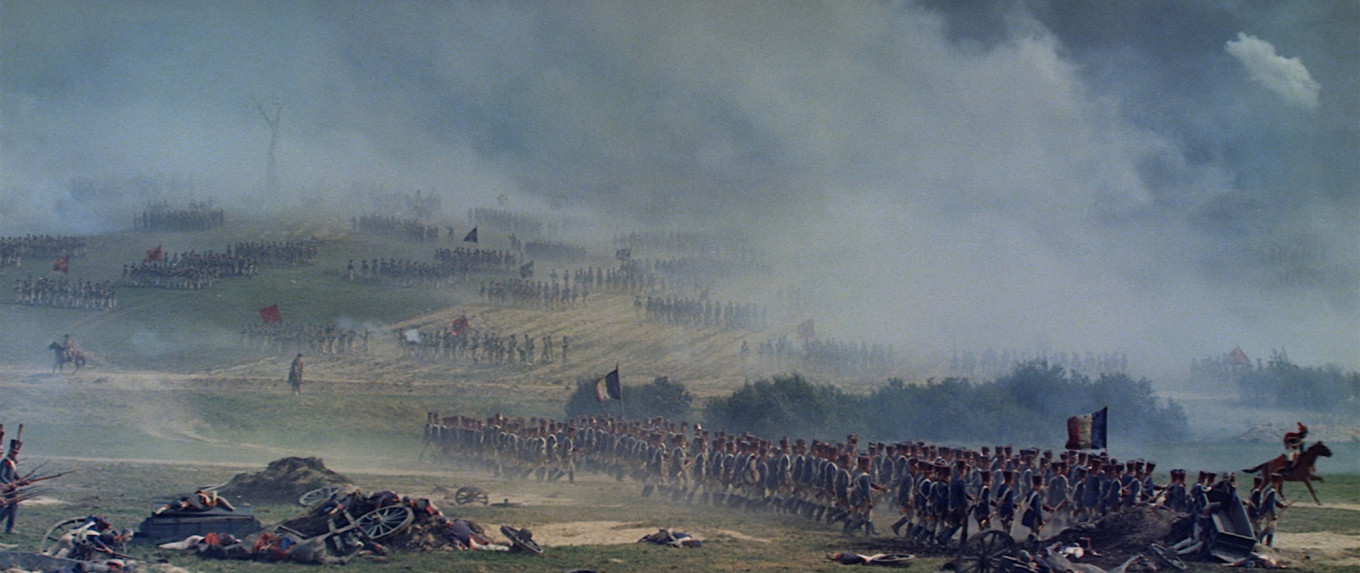There wasn’t a Russian film up for the Oscar this year, but a newly restored 1969 Oscar winner is an apt reminder of Soviet cinema’s impact on the sweeping Hollywood epic.
“War and Peace,” director Sergei Bondarchuk’s adaptation of Leo Tolstoy’s classic, expanded the scope, scale and aesthetic ambition of what could play on the silver screen. At the height of the Cold War it even achieved that most American cultural accolade, the Oscar for Best Foreign Film. The creation of this 4-part, 7-hour production and its impressive restoration 50 years later is as grand as the epic story the film tells.
Like many outsized expressions of national might at the time, “War and Peace” sprang from Cold War brinksmanship. In 1959, as part of a cultural exchange, the American 1956 production of “War & Peace,” directed by King Vidor and starring Audrey Hepburn, was screened in Soviet cinemas. According to Janus Films, the distributor of the restored Soviet version, the Soviet intelligentsia, indignant at seeing “their” masterpiece appropriated by an American director, demanded a response that would leave no confusion as to whose story this was to tell. In 1961, the Ministry of Culture gave Mosfilm, the leading Soviet studio, the job of outdoing Hollywood.
The result would dazzle the world and consume those involved for nearly a decade.
The Soviet government marshalled its vast resources for the production, which lasted from 1961 until 1967. Bondarchuk, domineering and difficult in almost mythic proportions, had a virtually unlimited budget and access to everything the government could provide. This included thousands of Soviet soldiers to serve as extras, borzois commandeered from private owners for the grand hunting scenes, priceless artifacts from the state’s museums, hairdressers flown in from Paris, and five generals to serve as consultants. Although difficult to ascertain, total cost is estimated at around $700 million in current USD.
Despite its critical success abroad, “War and Peace” and Bondarchuk soon fell out of national favor. In fact, many Soviet critics ignored the film altogether, with few reviews appearing for a production of this size. Bondarchuk’s alienating personality, his close affiliation with the Soviet regime, and a growing distaste for bombastic displays of patriotism in the latter days of the Soviet Union combined to obscure the man and his production. However, with patriotism’s renewed vigor in Russia under President Vladimir Putin, the movie has returned as a vehicle for national pride.
 Those soldiers aren’t CGI – they’re thousands of real Soviet soldiers. Courtesy of Janus Films
Those soldiers aren’t CGI – they’re thousands of real Soviet soldiers. Courtesy of Janus FilmsThe battle to make the film
Bondarchuk, known mostly as an actor until this project, was a favorite of Stalin — from whom he received the highest acting award in 1952 — but few others. Many of his first and even second casting choices turned him down because of his reputation for bullying and double-dealing.
He had the same problem hiring his preferred cinematographers. Many of those who initially agreed would either quit or regularly threaten to do so. His replacement cinematographers would even lodge a formal complaint against him with the studio.
But his mastery of the cinematic canvas makes it easy to understand why he was tolerated. Bondarchuk’s ability to utilize such vast resources and translate Tolstoy’s complex novel into a coherent tapestry about love, life and morality, seems like something close to a miracle.
The film, set from 1805 to Napoleon’s retreat from Moscow in 1812, tells its story through three star-crossed aristocrats: gallant Prince Andrei; young and vibrant Natasha; and the sensitive and thoughtful Pierre, played by Bondarchuk himself, a casting choice which only exacerbated his relationship with the acting community. Bondarchuk was a gifted actor but old for the part. However, with Pierre as the conscience and heart of the film, perhaps it was just impossible for Bondarchuk to resist.
The plot moves through grand balls, feasts, hunting parties and Bosch-like battle scenes and considers such weighty themes as duels of honor, affairs of the heart, enemies, treatment of prisoners of war, and fate vs. will.
The battle for restoration
The restoration process of the film proved challenging. The original versions that screened in the 1960s were difficult to reassemble, and even this current restoration is a close approximation. According to Janus Films, when Mosfilm decided to restore the film in 2000 they discovered that neither the studio, nor Gosfilmofond, the Russian Federation’s state film archive, possessed a complete 70 mm negative of the film in its original form. An extensive search in the archives of the former Soviet republics also failed to recover a complete version. The restoration, therefore, was achieved by assembling parts of negatives from various archives, with the complete positive copy held by Sovexportfilm, which had distributed it abroad, used for reference.
The result, now playing in New York and soon to open in Los Angeles, is thus actually closer to the original seen in the Soviet Union, and of far superior quality than the version that earned the Oscar 50 years ago. When it was first screened in the U.S. in 1968, audiences watched a shortened and poorly dubbed version. It is a testament to this beautiful epic that it transcended those faults. With Criterion releasing the film on blu-ray and DVD, theater and home audiences can finally appreciate this 7-hour filmic tour-de-force.






